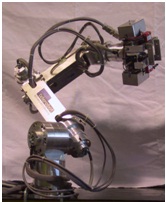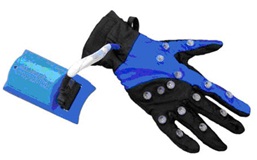Aug 10, 2011 , by
Public Summary Month 7/2011
The main goal of the experiment (Application development) is focused on safe human-robot cooperation. In the proposed experiment, the robot co-worker interacts with a human operator to achieve the common goal of manipulating shared objects. The robot will have to adapt its configuration and dynamics to the conditions imposed by the human operator.
A 7-DOF manipulator and a gripper (Figure 1) will be used in combination with a dataglove (Figure 2), as a Human-Machine Interface (HMI) and a motion tracker (Figure 3), to perform human-robot cooperative manipulation tasks. Objects characterized by different shapes (i.e., plate, bar, cylinder) and length will be used. Sensor failures and adverse conditions will be considered to test the safety of the human-robot cooperative tasks. In fact, the tracker will be used by the human agent in order to track the trajectory of the shared object while the robot position sensors will be selectively ignored to simulate sensor failures. The robot will be expected to adapt the trajectory using the load cell and the tracker will be used to make sure that the human operator remains safe while the control strategy is tested.
Specific control strategies will be developed, implemented and validated during the experiment in order to achieve a safe and compliant interaction between the robot and the human operator.
The experiment is coordinated by the BioRobotics Institute at Scuola Superiore Sant’Anna (Pisa, Italy) and it is carried out in collaboration with a single partner, Humanware Srl (Pisa, Italy), a company specialized in the design and development of advanced hardware and software HMI.


![]()
Figure 1. The robotic platform Figure 2. The dataglove Figure 3. The tracker








